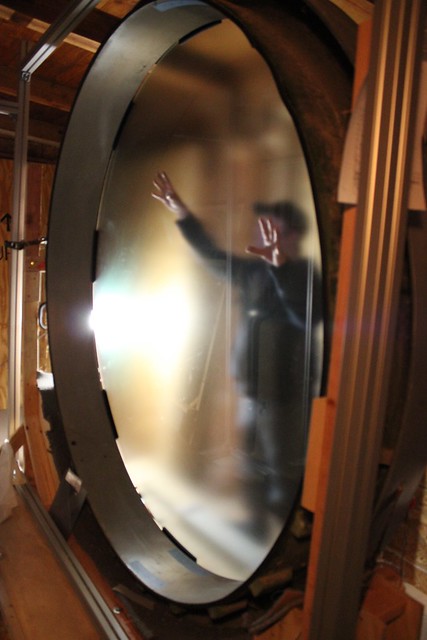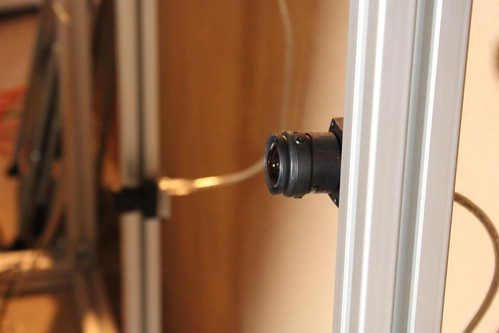For the latest installment see: Building a High-Resolution Multitouch Wall (Part 3), and Building a High-Resolution Multitouch Wall (Part 4). (Update 9/7/12: You might want checkout the Presenter Touch Wall, a 65″ multitouch wall built for public spaces.)
Back in November, I first blogged about building a 7-foot, round, high-resolution multitouch wall. At that point in the process we had just received the large ring and built the computer system. Now, we have installed the glass and have built out the rigging for the cameras and projectors.

The glass is haptic: it has a texture, doesn’t show fingerprints, and still displays the image beautifully. We purchased the glass from a company called Sevasa. They make an acid-etched architectural glass that has a great feel to it. The tempered glass is 10mm thick.
Due to the size of the glass, we are not adhering the project material directly on to the glass, but rather we have a piece of acrylic with projection material that will go directly behind the glass. We have already done projection test and the combination works great. (I will post more about that once we put the acrylic in place.)
Behind the 7-foot ring, we have built a rigging frame out of Bosch aluminum. The rigging holds the four IR (infrared) cameras in place. It will also hold the projectors in place.

We will be using an IR method called Laser Light Plane (LLP) illumination. The system will have four cameras that will gather the tracking information (credit devon). The exhibit will be installed in early summer, it is being built for a major North American aquarium. We will post another update on this project in the next week or two.
To see the previous step in the process check out: Building a High-Resolution Multitouch Wall Part 1.








